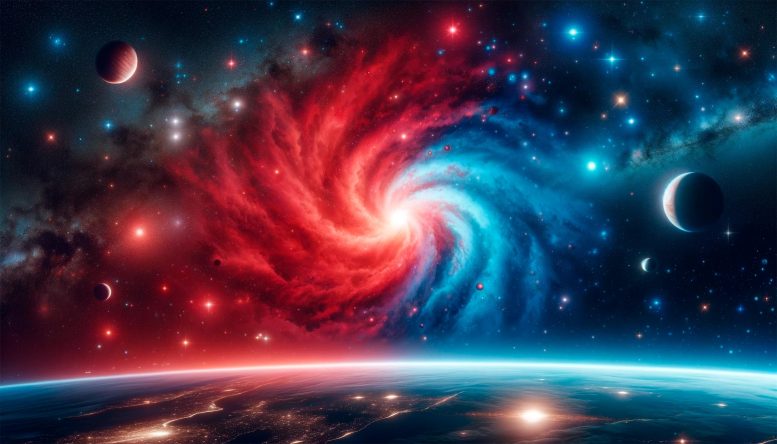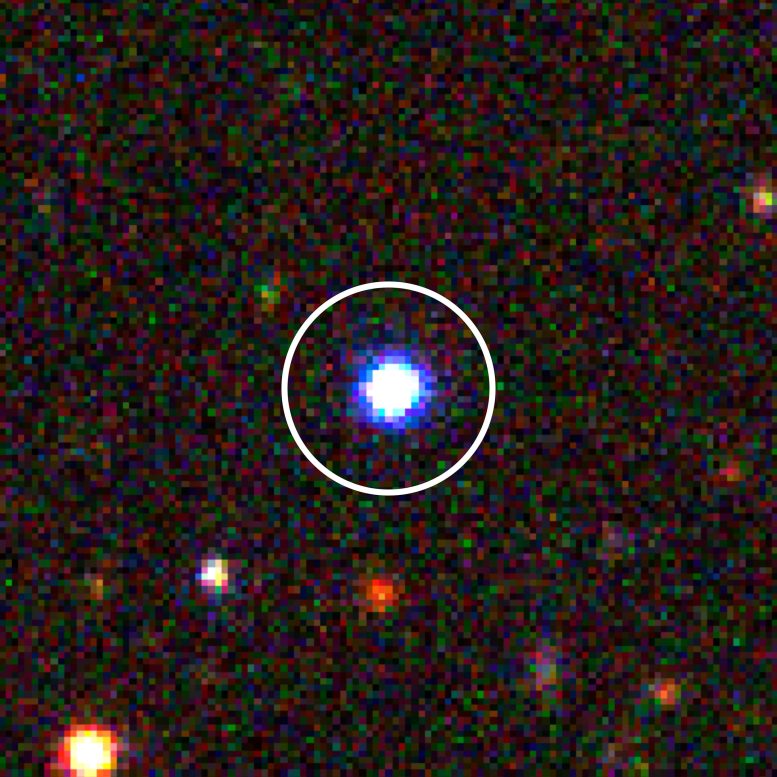

Researchers reevaluated extremely red objects (EROs) in JWST data, finding similarities with previously identified BluDOGs from Subaru Telescope data. This discovery contributes to the broader understanding of quasar evolution, indicating the need for further study with advanced telescopes like GREX-PLUS. Credit: SciTechDaily.com
Space researchers found that extremely red objects (EROs) in James Webb Space Telescope data resemble Subaru Telescope’s BluDOGs, challenging previous assumptions and underscoring the complexities of studying quasar evolution.
Not all discoveries turn out to be actual new discoveries. This was the case for the extremely red objects (EROs) found in James Webb Space Telescope (JWST) data. Analysis shows that they are very similar to blue-excess dust obscured galaxies (BluDOGs) already reported in Subaru Telescope data.
Quasars, some of the brightest objects in the Universe, are driven by a supermassive black hole with a mass that can reach more than a billion times that of the Sun. These objects are the focus of much research, but how they form remains poorly understood. The prevailing theory is that they form in galaxies with clouds of gas and dust that obscure the growing quasar until it is powerful enough to blast away the clouds. If this is true, it should be able to catch the short timeframe where a quasar breaks out of its cloud.


A blue-excess dust-obscured galaxy (BluDOG) imaged by the Subaru Telescope. Credit: NAOJ/HSC Collaboration
Because the transition period is short, it is necessary to observe a large number of pre-quasar candidates and hope to get lucky enough to catch a galaxy just as the quasar starts to break out. Looking at data from JWST, a group of extremely red objects (EROs) were identified as possible transitionary quasars. But then researchers at the Subaru Telescope, a Japanese telescope in Hawai`i, noticed that even though they are called “red,” EROs also have a significant blue component, similar to blue-excess dust obscured galaxies (BluDOGs) found in Big Data from the Subaru Telescope and described in a report last year.
Analysis showed that EROs and BluDOGs are likely the same class of objects, but important differences also exist. One possibility is that EROs are in an earlier stage in their evolution than BluDOGs. To determine the true relationship between EROs, BluDOGs, and quasars a larger sample of candidates needs to be collected. The larger sample will be studied by the next generation of astronomy instruments including an infrared space telescope project called GREX-PLUS being planned in Japan.
References:
“Similarity between Compact Extremely Red Objects Discovered with JWST in Cosmic Dawn and Blue-excess Dust-obscured Galaxies Known in Cosmic Noon” by Akatoki Noboriguchi, Akio K. Inoue, Tohru Nagao, Yoshiki Toba and Toru Misawa, 14 December 2023, The Astrophysical Journal Letters.
DOI: 10.3847/2041-8213/ad0e00
“Extreme Nature of Four Blue-excess Dust-obscured Galaxies Revealed by Optical Spectroscopy” by Akatoki Noboriguchi, Tohru Nagao, Yoshiki Toba, Kohei Ichikawa, Masaru Kajisawa, Nanako Kato, Toshihiro Kawaguchi, Hideo Matsuhara, Yoshiki Matsuoka, Kyoko Onishi, Masafusa Onoue, Nozomu Tamada, Koki Terao, Yuichi Terashima, Yoshihiro Ueda and Takuji Yamashita, 23 December 2022, The Astrophysical Journal.
DOI: 10.3847/1538-4357/aca403
“Optical Properties of Infrared-bright Dust-obscured Galaxies Viewed with Subaru Hyper Suprime-Cam” by Akatoki Noboriguchi, Tohru Nagao, Yoshiki Toba, Mana Niida, Masaru Kajisawa, Masafusa Onoue, Yoshiki Matsuoka, Takuji Yamashita, Yu-Yen Chang, Toshihiro Kawaguchi, Yutaka Komiyama, Kodai Nobuhara, Yuichi Terashima and Yoshihiro Ueda, 13 May 2019, The Astrophysical Journal.
DOI: 10.3847/1538-4357/ab1754
